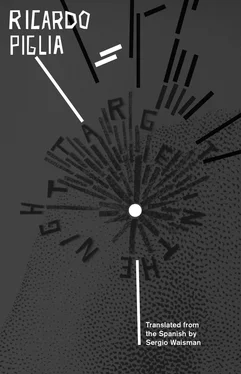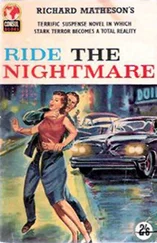
30 “Democritus, in Antiquity, already pointed out that: Mother earth, when made fruitful by nature, gives birth to harvests that serve as food for men and beasts. Because what comes from the earth must return to the earth, and what comes from the air must return to the air. Death does not destroy matter, it breaks up the union of its elements so they may be reborn in other forms. Very different from industry, etc… ” (Report by Mr. Schultz).
31 “He works uninterrupted, for many hours on end, at night and in the afternoon, never allowing himself any slowdowns, with great effort, through great fatigue. He demonstrates unbreakable confidence in the ‘immensurable value’ of his work. He never lets himself be brought down by the difficulties and he never admits the possibility of failure for any of his endeavors. He does not accept the least bit of criticism, he has absolute confidence in the destiny in store for him. For these reasons, he does not care about recognition. ‘We are concerned with praise and recognition in the exact measure to which we are unsure about our work. But he who, like us, is sure — absolutely sure — of having produced a work of great value, has no reason whatsoever to care about recognition. Such a person, like us, will feel indifferent to all worldly glory’” (Report by Mr. Schultz).
32 “I am too curious and too clever and too proud to behave like a victim” (Dictated to Mr. Schultz).
33 “The pampas presents a privileged medium for photography because of the distances, its folding effects, and the intense plenitude lost in the non-space of visual deprivation” (Note by Grete Berlau).
34 Two years after the events recorded in this story, on January 15, 1974, Grete Berlau drank one or two cups of wine before going to bed, and there, lit a cigarette. There was a fire, and she suffocated in the burning room. She may have dozed off while she was smoking. “We have to do away with the habit of speaking about things that cannot be said by speaking,” was one of the sayings of Lai-tu that Brecht recorded in the Me-ti , or The Book of Changes .
They walked down the interior stairwell and into the main part of the factory, where they toured the industrial plant and were surprised by the elegance and spaciousness of the building. 35The indoor garage was nearly two blocks in length, but it looked like a place that had been suddenly abandoned, right before some imminent disaster. A general paralysis had fallen over the steel accumulated there, much like a stroke leaves a man — who has drunk and fornicated and lived life to the fullest until the fatal instant when, from one second to the next, an attack immobilizes him forever — dry and lifeless.
Frozen assembly lines; a stretched-out section of upholstery with the dyed leather and the seats waiting on the floor; rims, wheels, stacked tires; a shed, its door and windows covered with canvases; inside the shed, metal sheets and cans of paint; tools and mechanical pieces, wheels, pulleys, and small measuring instruments on the floor of the garage; tires with Stepney wood crossbeams; Hutchinson pneumatics; a Stentor horn; an ingenious turbine to inflate tires, activated by the output from the exhaust pipe; a cigüeñal crankshaft with its strange bird-name; a long workbench with adjustable bench vices, optical apparatuses, and gauging devices. The feeling of sudden abandonment was like a cold draft coming off the walls. The steel guillotine shear and the Campbell automatic folding machine, both purchased in Cincinnati, were in perfect condition. Two partially assembled automobiles had been left elevated above the service pits in the middle of the garage. Everything seemed to be in a suspended state, as if an earthquake — or the gray, viscous lava of an erupting volcano — had frozen the factory during an average workday, at the precise moment of its freezing. April 12, 1971 . The calendar with naked women from a tire shop in Avellaneda, the old wooden box radio plugged into the wall, the newspapers covering the broken glass windows: everything pointed to the exact moment when time had stopped. A blackboard hanging by a wire still had the call to assembly from the plant’s internal commission. There was no date on that, but it was from the time of the conflict. Fellow workers, there will be a general assembly tomorrow to discuss the situation of the company, the new conditions, and our battle plan. 36 The electric clock on the back wall had stopped at 10:40 (but was it am or pm?).
After a while they were able to discern the signs of Luca’s more current activity. Spherical and curved objects set up on the floor, like animals from a strange mechanical bestiary; a device with wheels, gears, and pulleys, which seemed recently finished, painted in bright red and white paint; a small bronze plate that read: The wheels of Samson and Delilah ; the diagrams and plans for a monumental construction, fragmented in small, circular models, laid out on a drafting desk. A garage where one hundred workers were once employed, now occupied by a single man.
“We have resisted,” Luca said, then switched to the second person singular. “No one helps you,” he said. “They make everything difficult. You get taxed before you’ve even produced anything. This way, please.”
He wanted to show them the work to which he’d dedicated his recent efforts. He led them on a path between connecting rods, batteries, and stacked tires, through an alley formed by large containers, and to an opening near the back where they saw an enormous steel structure rising in the air. It was a conical construction, six meters tall, made of grooved steel, resting on four hydraulic legs, painted with a dark, brick-red antioxidant paint. It looked like a stratospheric device, a prehistoric pyramid, or like the prototype of a time machine, maybe. Luca called this unsettling conical contraption The Viewer .
You could only enter The Viewer from underneath, by sliding through the tubular legs. Inside, once you stood up, you found yourself in a triangular metal tent, tall and serene. The interior contained stairs, a glass elevator, stretched platforms, and small, grilled windows. The device culminated in a glass eye at the top, two meters in diameter, surrounded by metal corridors. It could be reached by climbing the spiral staircase that led up into the control room, with its large windows and rotating chairs. The view from the top was circular and magnificent. In one direction, according to Luca, you could see the entire celestial sphere . In the other, by using a mechanical arm to adjust a series of mirrors set up as square cells, you could also look out over the deserted pampas. In the distance, toward the south of the province, the moon reflected off of the surface of the lakes, in turn surrounded by flooded fields that formed an extended yellow vastness across the plains. Closer in were the sown fields, the animals scattered in the prairies, and the roads intersecting on the slopes near the large estancias. Finally, crowded at the foot of the hills like a sandbank, you could just make out the roofs of the tallest houses in town, the main street and square, and the railroad tracks.
In front of the chairs there was a board with electronic instruments to fine-tune the positioning of the mirrors and make slight oscillations to the pyramid. Luca had placed three Zenith television sets above the steel walls, attached by clamps, and he’d connected them with a complex network of cables and movable antennas. The screens, when they were turned on, were tuned to simultaneous channels. On them, you could follow three different images at the same time.
Читать дальше













